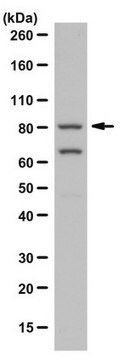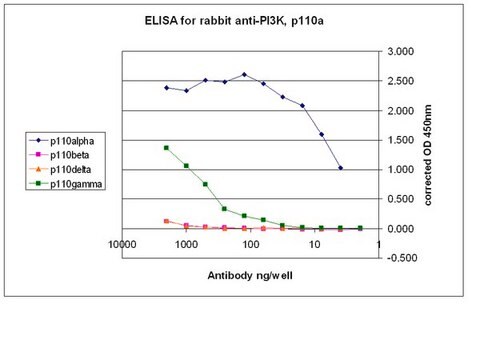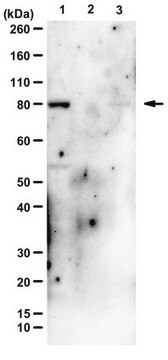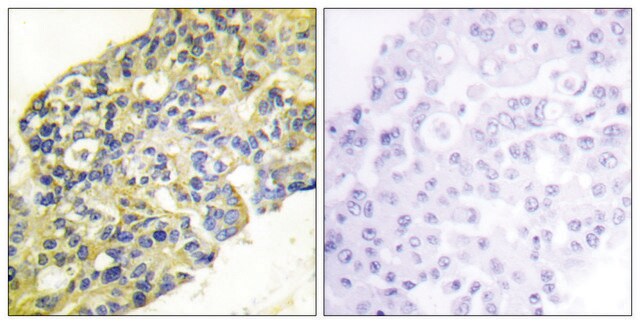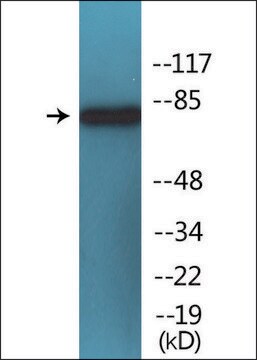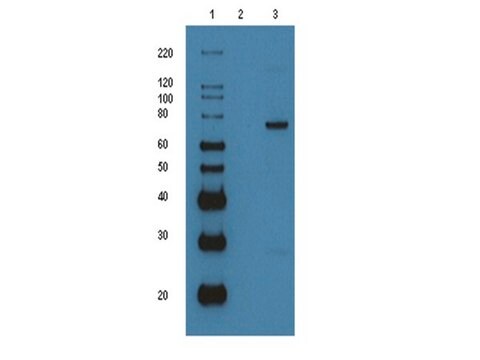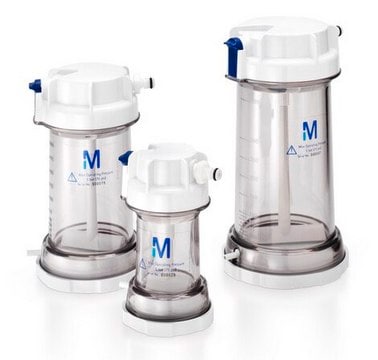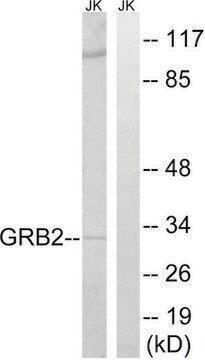05-212
Anti-PI3 Kinase Antibody, p85, N-SH3, clone AB6
clone AB6, Upstate®, from mouse
Sinonimo/i:
PI3-kinase p85 subunit alpha, PtdIns-3-kinase p85-alpha, phosphatidylinositol 3-kinase, regulatory subunit, polypeptide 1 (p85
alpha), phosphatidylinositol 3-kinase, regulatory, 1, phosphatidylinositol 3-kinase-associated p-85 alpha, phosphoinos
About This Item
Prodotti consigliati
Origine biologica
mouse
Livello qualitativo
Forma dell’anticorpo
purified antibody
Tipo di anticorpo
primary antibodies
Clone
AB6, monoclonal
Reattività contro le specie
human, rat, mouse
Produttore/marchio commerciale
Upstate®
tecniche
immunocytochemistry: suitable
immunoprecipitation (IP): suitable
western blot: suitable
Isotipo
IgG1κ
N° accesso NCBI
N° accesso UniProt
Condizioni di spedizione
wet ice
modifica post-traduzionali bersaglio
unmodified
Informazioni sul gene
human ... PIK3R1(5295)
Descrizione generale
Specificità
Immunogeno
Applicazioni
10 µg/mL of a previous lot of this antibody was used in immunocytochemistry.
Immunoprecipitation:
4 µg of a previous lot immunoprecipitated PI3 Kinase from 500 µg of an A431 RIPA lysate, as confirmed by immunoblot using a polyclonal PI3 Kinase antibody (Catalog # 06-195).
Signaling
PI3K, Akt, & mTOR Signaling
Kinases & Phosphatases
Qualità
Western Blot Analysis:
0.5-2 µg/mL of this lot detected PI3 Kinase in RIPA lysates from human A431 cells; previous lots detected PI3 Kinase in RIPA lysates from rat L6 myoblasts.
Descrizione del bersaglio
Linkage
Stato fisico
Stoccaggio e stabilità
Handling Recommendations:
Upon receipt, and prior to removing the cap, centrifuge the vial and gently mix the solution. Aliquot into microcentrifuge tubes and store at -20ºC. Avoid repeated freeze/thaw cycles, which may damage IgG and affect product performance. Note: Variability in freezer temperatures below -20ºC may cause glycerol-containing solutions to become frozen during storage.
Risultati analitici
Positive Antigen Control: Catalog #12-301, non-stimulated A431 cell lysate. Add 2.5µL of 2-mercaptoethanol/100µL of lysate and boil for 5 minutes to reduce the preparation. Load 20µg of reduced lysate per lane for minigels.
Altre note
Note legali
Esclusione di responsabilità
Non trovi il prodotto giusto?
Prova il nostro Motore di ricerca dei prodotti.
Codice della classe di stoccaggio
12 - Non Combustible Liquids
Classe di pericolosità dell'acqua (WGK)
WGK 2
Punto d’infiammabilità (°F)
Not applicable
Punto d’infiammabilità (°C)
Not applicable
Certificati d'analisi (COA)
Cerca il Certificati d'analisi (COA) digitando il numero di lotto/batch corrispondente. I numeri di lotto o di batch sono stampati sull'etichetta dei prodotti dopo la parola ‘Lotto’ o ‘Batch’.
Possiedi già questo prodotto?
I documenti relativi ai prodotti acquistati recentemente sono disponibili nell’Archivio dei documenti.
Il team dei nostri ricercatori vanta grande esperienza in tutte le aree della ricerca quali Life Science, scienza dei materiali, sintesi chimica, cromatografia, discipline analitiche, ecc..
Contatta l'Assistenza Tecnica.